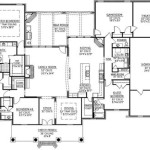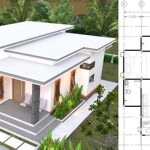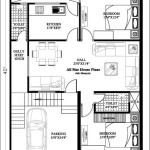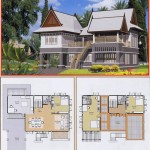Essential Aspects of Small Homes Floor Plans Free
Designing a small home can be a daunting task, especially when trying to maximize space and efficiency. However, with careful planning and consideration, it is possible to create a comfortable and functional living space that meets your needs. Here are some key aspects to consider when creating a floor plan for a small home:
1. Functionality and Flow
When designing a small home floor plan, functionality and flow should be your top priority. Consider how you and your family will move through the space and how each room will be used. Create a layout that allows for easy transitions between rooms and maximizes natural light. Aim to minimize wasted space and ensure that every area serves a purpose.
2. Space Planning
Smart space planning is crucial in small homes. Utilize vertical space by incorporating built-in storage and shelves. Use furniture that can serve multiple purposes, such as ottomans with built-in storage or beds with drawers. Consider open floor plans to create a sense of spaciousness and allow for more flexible use of space.
3. Multi-Purpose Rooms
In small homes, it is often necessary to combine multiple functions within a single room. For example, a living room can also serve as a dining room or a guest room. Design spaces that can be easily transformed to accommodate different activities. Use dividers, screens, or curtains to separate areas when needed.
4. Natural Light
Maximizing natural light can make a small home feel more spacious and inviting. Position windows and doors to allow for ample natural light throughout the day. Use light-colored paint and reflective surfaces to bounce light around the space. Consider skylights or solar tubes to bring in additional natural light.
5. Storage Solutions
Adequate storage is essential in small homes. Plan for ample storage solutions, including built-in closets, drawers, and shelves. Utilize unconventional spaces, such as under stairs or in attic eaves, to create additional storage. Consider vertical storage options to maximize space.
6. Outdoor Space
Even in small homes, outdoor space can be invaluable. Designate a portion of your floor plan for a patio, balcony, or courtyard. Outdoor space can provide a place to relax, entertain, or simply enjoy the fresh air. Consider privacy and incorporate screens or plantings to create a more secluded area.
7. Customization
No two small homes are exactly alike. Customize your floor plan to suit your specific needs and preferences. Consider your lifestyle, hobbies, and family size when designing the layout. Incorporate features that make your home unique and reflect your personality.
Additional Tips for Small Home Floor Plans Free
- Use a graph paper or online floor planning software to create accurate floor plans.
- Cut out paper or cardboard to represent furniture and move it around the plan to test different layouts.
- Consider using built-in appliances to save space.
- Opt for furniture that is proportionate to the size of the rooms.
- Declutter regularly to minimize visual clutter and create a sense of spaciousness.
By following these essential aspects and considering additional tips, you can create a small home floor plan that meets your needs, maximizes space, and creates a comfortable and functional living environment.
27 Adorable Free Tiny House Floor Plans Small
27 Adorable Free Tiny House Floor Plans Small
27 Adorable Free Tiny House Floor Plans Craft Mart
Free Small House Plans For Old Remodels Bedroom Floor
Tiny House Floor Plans 32 Home On Wheels Design
27 Adorable Free Tiny House Floor Plans Cottage Small
Small House Floor Plans Country
Free Shed Tiny House Floor Plan Release
Barrier Free Small House Plan 90209pd Architectural Designs Plans
Free Small House Plans For Old Remodels Bedroom








